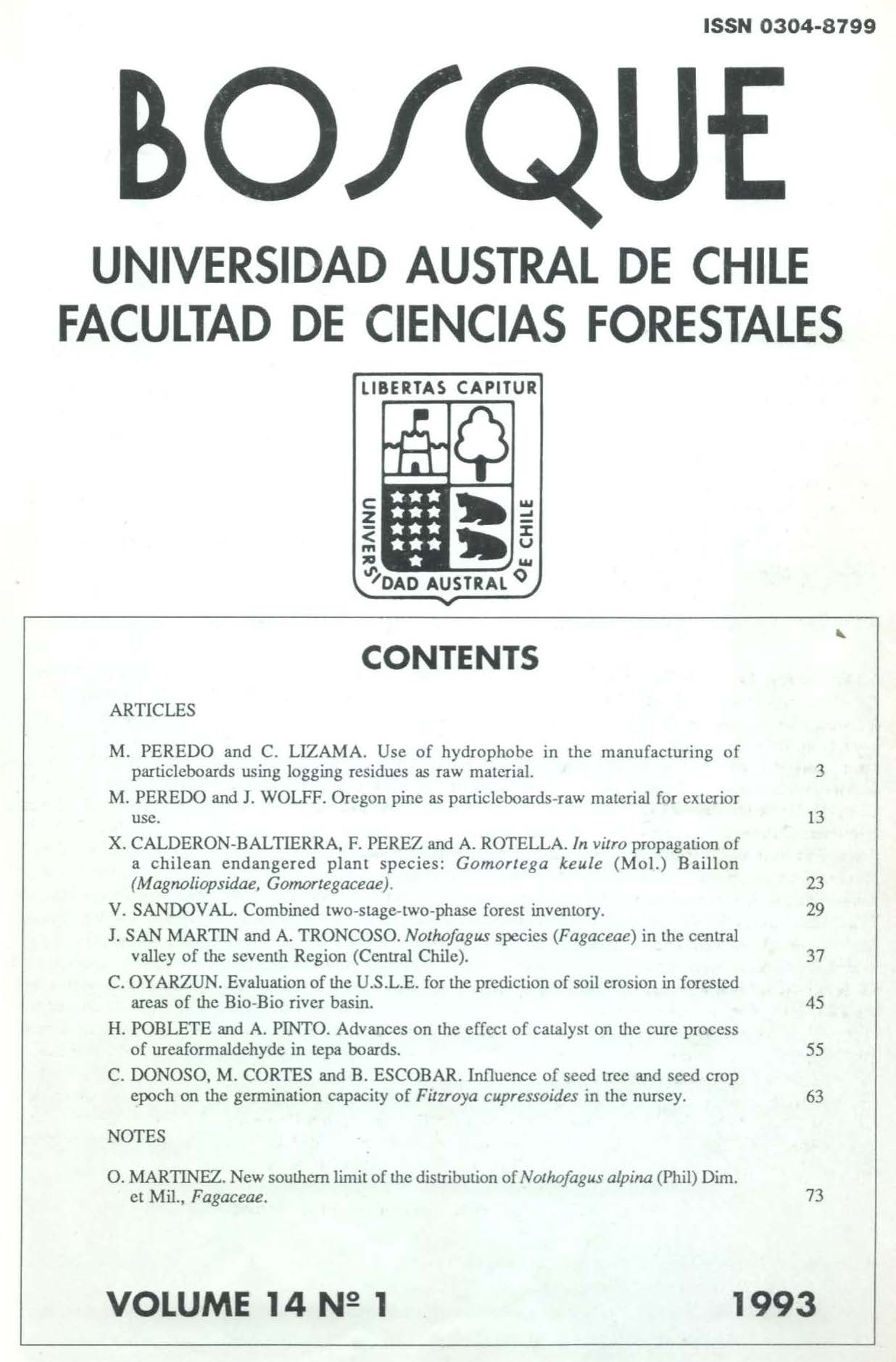Main Article Content
Jun 30, 1993
Abstract
The technical feasibility and the effect of a hydrophobic substance on particleboards made with the logging residues of Olivillo, and Pino insigne wood was studied. The manufacturing of the boards used residues from a 13 year old radiata pine tried with an average diameter of 14 cm and a height of 20.3 m., and for the Olivillo boards residue from a felling site of Roble-Laurel-Lingue, with average diameters of 25.8 cm and 100 to 150 years of age was used. Twenty-four boards, of a single layer, 11 mm. thick and with density of 600 kg/m3 , were made from each of the two species considered. Ureaformaldehyde was the adhesive used with a binder factor of 9% b.o.d.w. The hydrophobic substance used, was a parafine emulsion which was applied at five different concentrations b.o.d.w. of the particles, the lowest being 0.5% and the heighest being 2.5 %. By including hydrophobic substances into the boards, their physical properties improve notably. However, the hydrophobe produced a slight decrease in the recorded mechanical resistance of the boards, particulary those of traction, which was not, however, significant.
With a level of up to 1.5% of parafine emulsion added to the boards, adequate physico-mechanical properties were attained which also reached the values established by the corresponding norms.


